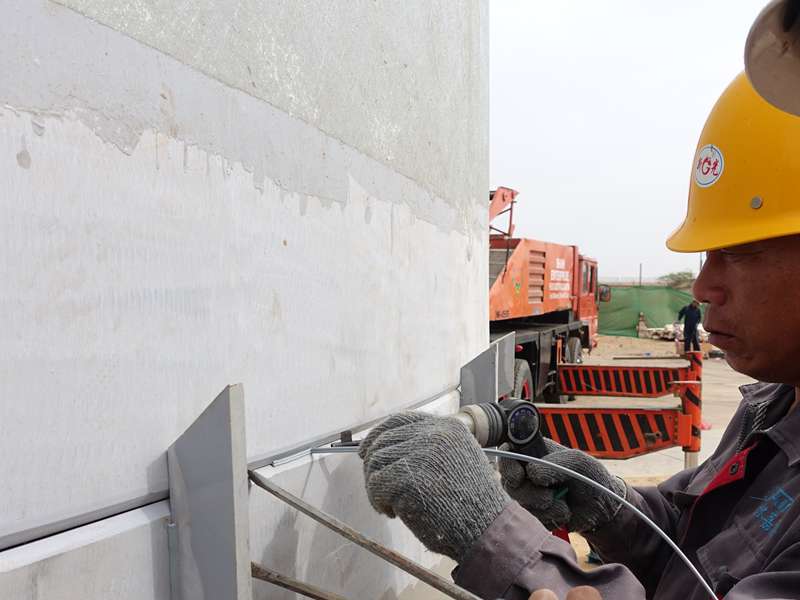Dual Laminate Products - Corrosion-Resistant Tanks & Piping
Corrosion doesn’t wait. Plants push hotter, nastier chemistries every year, and to be honest, a lot of legacy materials simply can’t keep up. That’s why I keep circling back to Dual Laminate Products—the quiet workhorses that combine a thermoplastic liner with FRP strength. It’s a practical marriage of materials that many maintenance teams now swear by, especially when budgets resist high-nickel alloys.

What are they, really? A corrosion-proof inner liner (PVC, CPVC, PP, PE, PVDF, or HDPE) backed by a fiberglass-reinforced plastic (FRP) shell that supplies the structural muscle. Jrain, based in No. 1289, Yingbin South Street, Jizhou District, Hengshui, Hebei, China, builds these to order—sizes aren’t locked to standard mandrels, which is a relief when you’re retrofitting a brownfield line with odd geometry.
Process flow (how they’re made, without the fluff)
- Material selection: choose liner (PVC/CPVC/PP/PE/PVDF/HDPE) based on media and temperature; select vinyl ester or epoxy FRP resin system.
- Liner prep: sheets or pipe are butt-fused or extrusion-welded; spark testing for pinholes (typ. 10–20 kV per ASTM D543 guidance context).
- Lamination: corrosion barrier veil, then structural FRP by filament winding/hand lay-up; cure control with Barcol hardness checks.
- Fabrication: flanges, nozzles, saddles; conductive liners available for static-sensitive services.
- Testing: hydrostatic per ASTM D1599/D2992 concepts, visual per ASTM D2563, tensile coupons per ASTM D638; leak tests at ≈1.3–1.5× design pressure (project dependent).
Service life? In well-chosen applications, ≈20–30 years is common; real-world use may vary with temperature cycling, UV exposure, and operator discipline.
Quick spec snapshot
| Parameter | Typical range (≈) | Notes |
|---|---|---|
| Liners | PVC, CPVC, PP, PE, PVDF, HDPE | Pick by chemistry/temp |
| Temperature | -20 to 120°C | PVDF/CPVC handle higher; confirm per duty |
| Pressure rating | PN 6–25 (≈90–360 psi) | Depends on diameter/thickness |
| Standards | ISO 14692, ASME RTP-1 (fabrication), ASTM D2992 | Project specs may add more |

Where Dual Laminate Products shine
Chemical processing (chlor-alkali brine, HCl, H2SO4), wastewater and FGD scrubbers, mining slurries, microelectronics wet benches, pickling lines. Compared with alloy steels, they resist chloride stress cracking; compared with plain FRP, they shrug off permeation and softening in hot acids. Many customers say maintenance intervals finally stabilized after switching.
Vendor comparison (real-world buyer questions)
| Vendor | Lead time | Customization | QA/Docs |
|---|---|---|---|
| Jrain (Dual Laminate Products) | Around 3–8 weeks, size-dependent | Non-standard diameters, custom nozzles | Mill certs, hydro/leak, spark-test logs |
| Import Brand A | 8–14 weeks | Catalog-driven with options | Standard dossier; limited field support |
| Local Fabricator B | 2–6 weeks | High; depends on shop skill | Varies; verify procedures/certs |
Customization and validation
Dual Laminate Products can include conductive PVDF liners (ATEX zones), vacuum-rated shells (per ISO 14692 guidance), field-joint kits, and FRP supports. Documentation typically covers material traceability, Barcol hardness, resin content (ASTM D2584), tensile (ASTM D638), and hydrostatic tests. ISO 9001 quality systems are common; ask for ASME RTP-1 compliant procedures when vessels are involved.

Mini case notes
- Fertilizer plant acid scrubber duct: PVDF-lined FRP replaced alloy; pressure test at 1.5× design passed; maintenance calls dropped in year one.
- Chlor-alkali brine line: CPVC/FRP with conductive liner; no pinholes after spark testing; operators noted easier handling vs steel.
- Mining slurry bypass: PP/FRP spools with abrasion veil; downtime cut ≈25% compared with unlined FRP, according to site maintenance.
If you want a straight answer: these are cost-effective for corrosives up to mid-high temperatures when properly specified. The trick is liner chemistry, joint design, and disciplined QA. Get those right and the payback tends to arrive sooner than expected.
Authoritative citations
- ISO 14692: Petroleum and natural gas industries — Glass-reinforced plastics (GRP) piping.
- ASME RTP-1: Reinforced Thermoset Plastic Corrosion-Resistant Equipment.
- ASTM D2992: Obtaining Hydrostatic Design Basis for Fiberglass Pipe.
- ASTM D1599: Short-Time Hydraulic Failure Pressure of Plastic Pipe.
- ASTM D638: Tensile Properties of Plastics.
- ASTM D543: Chemical Resistance of Plastics.
- ASTM D2563: Visual Inspection of Reinforced Plastics.
- ASTM D2584: Ignition Loss of Cured Reinforced Resins (resin content).
Latest news
-
Rectangular Tank Made of Fiberglass Material – Durable, Cost-Effective Liquid Storage SolutionsNewsNov.24,2025
-
Hollow Drill Rods for Efficient Drilling Operations in the Field | Durable, Lightweight & CustomNewsNov.23,2025
-
Powerful yt27 Rock Drill for Tough Mining Surfaces | Durable & PortableNewsNov.23,2025
-
Why the Reversible Drill Bit Is a Versatile Tool for All Your Drilling NeedsNewsNov.22,2025
-
Fiberglass Food Grade Equipment: Key Features, Benefits & Global ImpactNewsNov.22,2025
-
How a Drilling Rod Spirals Down Into the Earth: Tech, Trends & Global ImpactNewsNov.21,2025










